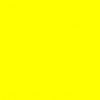Artists & Food

Food That Enamors Artists
Cookery is often referred to as a craft. An inventor of a recipe follows a recipe which is usually expanded upon over time by multiple cooks. Because of this they are considered artisans, in contrast to the fine artist who works alone, and is considered original. But if a cook intends the dish to be scrutinized aesthetically doesn’t he or she also count as an artist? Can a recipe and its interpretation be treated as a work of art?
Aesthetics are universally defined as the theory of beauty and taste. “Beauty is not confined to art and art is not solely the pursuit of beauty”1….but within our contemporary lives it is difficult to disassociate the two. This dichotomy between beauty and art is perpetuated in a well-known colloquial expression designed to explain just about anything as an art form: the art of the deal, the art of shaving, the art of computer science, etc… As a society, we have reduced fine art to the level of the mundane blurring the definition of artistic value ….
Just as artists bring the zest of life to their art - there are also copious examples of a daily interaction between art and food which are just as ardent. For example, the walls of the Egyptian tombs are adorned with still life paintings and similar works found in floor mosaics of Pompeii; painters used images of food during the Middle Ages and the Renaissance to convey religious and allegorical themes. During the 60’s, Pop Art transposed this trend with Andy Warhol’s images of soup cans – thereby elevating the mundane to the level of art. The American painter Wayne Thiebaud explored subjects such as cakes, bubble gum machines, ice cream sodas, and cut pieces of meringue pie as subjects of what is best in America. FrogFood, created by the world renowned ceramist David Gilhooly, challenged the ceramic still life with a dissonant sense of humor by putting green frogs on hamburger buns and ice cream sticks and labeling them with whimsical titles such as Frogiscles, FrogSub, Frogfry with Bacon and Eggs, and BreadFrog. Yes, the finer things of life certainly are tasteful –
However taste is an exercise of judgment just as vague as aesthetic quality…it is based upon principles of choice and preference applied from aspects of our experience. Taste can be cultivated but its primary role in most things is one of criticism. However, taste is also an ability to respond to sensations such as sweet, sour, salty, and bitter thereby ushering in the art of cuisine.
One observable fact about food is the disparity between what is considered sensual satisfaction and survival. When we are poor what we feel most is hunger and when we are rich what we spend lavishly on is food. The image of the starving artist epitomizes this gap between our appetite and our hunger. Vincent Van Gogh especially personifies this theme of suffering… and his relationship with food was very complicated as well. He equated virtue with abstinence from luxury and subsisted on a diet of coffee and bread for weeks while devoting his scanty funds to paint and materials. The biblical adage, “man can not live by bread alone” implied to Van Gogh that one should strive for higher goals such as art or literature. His noted painting of the “Potato Eaters” was an attempt to honor sustenance in his art since potatoes are much like bread. Even in those days “to earn your bread” meant to make a living…another endless source of torment for Van Gogh who was supported by his brother for most of his life.
In contrast, Henri Toulouse Lautrec was born into the upper class and invented unusual and delicious recipes, taking great pride in his culinary skills – He would plan meals carefully and make beautifully decorated menus for his friends. Then he would draw them as they consumed the food. Lautrec was noted for sketching the social scenes in the cafes and bars of Paris, and much of the cuisine he created correlated to those atmospheres launching the term “cocktail food.”
It is important to realize that foodstuffs have long been made into objects acclaimed to be visual works of art, and artists have long celebrated food in their art. If recipes are to be considered works of art – what must also be recognized is that food is only deficient in raising aesthetic questions. Yet this kind of analysis fits well since there is an obvious pleasure one gets from the smell and taste of food…..not because it will sell but for the food’s own sake. Regardless, recipes still don’t hold the same stature as painting or literature and as a result they must remain a minor art form. They do however offer a way to make elegance a part of ordinary life and absolutely have an aesthetic role to play in our lives.
This hub introduces the idea of bringing together a collection of recipes correlated to notable artistic personalities and provide a new way to experience aesthetics in your daily routine - through the foods you prepare.
References:
1. History of Aesthetics, Wladyslaw Tatarkiewicz, Volume 1, Ancient Aesthetic, 1962
Recipe from ‘The Art of Cuisine’, by Toulouse-Latrec … a collection of original recipes and drawings from the artist along with insights on French life at the time.
Poulets au Riz
Ingredients
- 2 Whole Chickens
- 2 cups Basmati Rice
- 1/2 tsp Bovril (meat extract)
- 1/2 tsp Saffron
- 3 Cheeses to taste Gruyere, Edam, Parmensan
- 1/2 stick Butter
- To taste Salt & Pepper
Instructions
- Have one or two good chickens, cook them in the oven, well basted with butter and fat. Having cooked some rice in the Indian way, very white and well dried, add half a coffee spoon of meat extract and saffron to which water has been added to give color, a large lump of butter, and the gravy from the chicken. Heat up the rice, sprinkling it was grated gruyere, Holland, and parmesan cheese. Serve the chickens on the bed of rice. Reference: The Art of Cuisine








